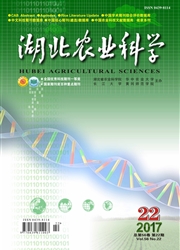

 中文摘要:
中文摘要:
采用全因子试验设计,配制含有3个蛋白质水平(32%、30%、28%)和3个糊精水平(15%、20%、25%)共9组试验饲料,每组3个平行,养殖周期为8周,探讨了对乌克兰鳞鲤(Cyprinus carpio)生长、体成分及抗氧化能力的影响。结果表明,蛋白质和糊精对生长性能无交互作用(P〉0.05)。随着蛋白质水平升高,肝体比显著提高(P〈0.05);随着糊精水平增加,相对增重率、特定增长率出现明显升高。蛋白质和糊精水平对体内脂肪及灰分含量存在明显的交互作用(P〈0.05)。20%糊精组肝胰脏超氧化物歧化酶(SOD)、过氧化氢酶(CAT)活性显著高于15%和25%糊精水平(P〈0.05),并且丙二醛(MDA)含量显著低于25%糊精水平(P〈0.05)。综合分析得出,蛋白水平在30%~32%,糊精水平在20%~25%之间最适宜乌克兰鳞鲤的生长。
 英文摘要:
英文摘要:
3 ×3 factorial experiment was conducted to determine the effects of dietary protein and dextrin levels on growth performance, body composition and antioxidant capacity of Ukraine scale carp. 9 experimental diets with 3 protein levels of32%, 30%, 28% and 3 dextrin levels of 15%, 20%, 25% were fed to triplicate groups of fish for 8 weeks. The results indicate that there is no interaction for the growth between protein and dextrin levels(P0.05). The protein level plays a significant role on the hepatosomatic index(P0.05). With the rising of dextrin levels, the weight gain(WG) and special growth ratio(SGR) increase significantly. Significant interactions(P0.05) between dietary protein and dextrin levels are detected for body lipid and ash. The SOD and CAT activities in hepatopancreas of the group fed with 20% dextrin level are the highest,and the MDA contents of this group is lower than that of the 25% group(P0.05). In conclusion, fish fed diets with protein levels of 30% to 32% and dextrin levels of 20% to 25% get the best growth performance.
 同期刊论文项目
同期刊论文项目
 同项目期刊论文
同项目期刊论文
 期刊信息
期刊信息
